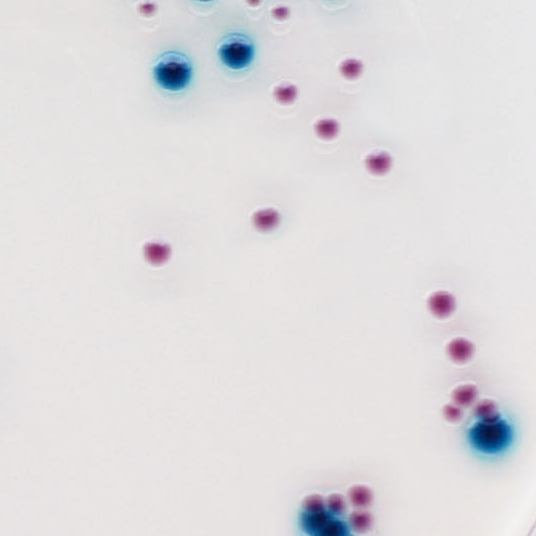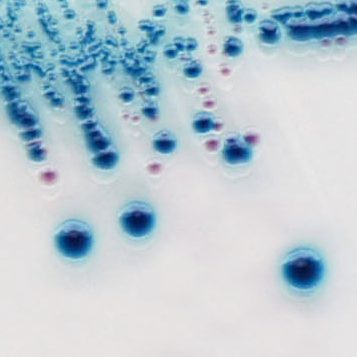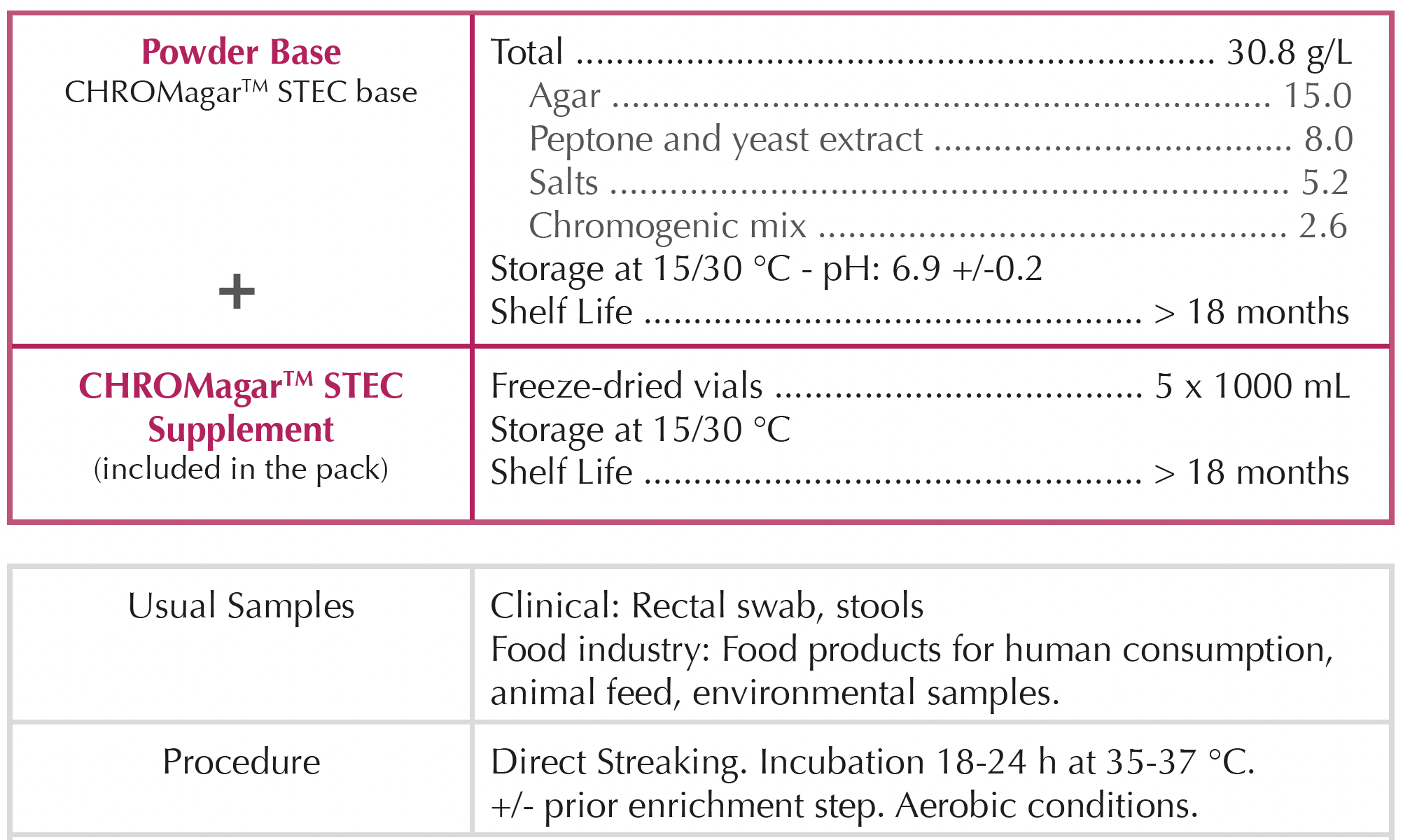Description
Colonies Appearance

Most common Shiga-Toxin
E. coli serotypes
Mauve

Other Enterobacteriaceae
Colourless, blue or inhibited
Performance
An increasing and worrisome number of studies have lately shown that, non-O157 ShigaToxin-producing E. coli (STEC) have been responsible for foodborne poisoning outbreaks. The CDC has also reported warnings about this potential risk:
“ Disease caused by Shiga toxin-producing Escherichia coli (STEC) ranges from self-limiting diarrhea to hemorrhagic colitis and hemolytic uremic syndrome (HUS). Serotype O157:H7, the most frequently implicated STEC causing hemorrhagic colitis and HUS, has been isolated from large foodborne outbreaks, as well as sporadic cases, in North America and abroad. However, 60 STEC serotypes have been implicated in diarrheal disease, and several non-O157:H7 serotypes have been implicated as the cause of foodborne outbreaks and HUS in the United States, Europe, and Australia. Studies from Canada, Europe, Argentina, and Australia suggest that non- O157:H7 STEC infections are as prevalent, or more so, than O157:H7 infection.”
CDC report « Prevalence of Non-O157:H7 Shiga Toxin-Producing Escherichia coli in Diarrheal Stool Samples [...]»
Therefore, several regulatory authorities urge worldwide food industry to implement measures to control the absence of such organisms in their production. In many cases, laboratories have limited their search for pathogenic E. coli to the common O157 serotype. This is due, among other reasons, to the fact that there were no available selective culture media for non-O157 E. coli.
CHROMagar™ STEC is designed to fill this gap: detection, as mauve colonies, of not only the classical STEC O157, but also many other serotypes.
Intended Use
CHROMagar™ STEC is a selective chromogenic culture medium intended for use in the qualitative direct detection, differentiation and presumptive identification of Shiga-like-toxin producing Escherichia coli (STEC), to aid in the diagnosis of STEC infections. The test is performed with rectal swab and stools. Results can be interpreted after 18-24 h of aerobic incubation at 35-37 °C.
Concomitant cultures are necessary to recover organisms for further microbiological testing or epidemiological typing. A lack of growth or the absence of mauve colonies on CHROMagar™ STEC does not preclude the presence of STEC. CHROMagar™ STEC is not intended to diagnose infection nor to guide nor monitor treatment for infections.
CHROMagar™ STEC can also be used in the detection of STEC in the analyses of food products for human consumption, animal feed and in environmental samples.
1. Easy reading : A majority of STEC strains grow in mauve colony color, while other bacteria grow in blue, colourless or are inhibited.
2. Highly STEC selective medium : Excellent tool for large number of samples screening procedures.

3. Worldwide premiere : Unique medium in the market for STEC detection.
4. Flexibility : It can be supplemented with additional compounds to render it even more selective for the strain causing an outbreak.
Composition









